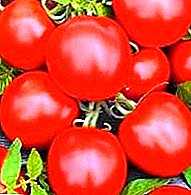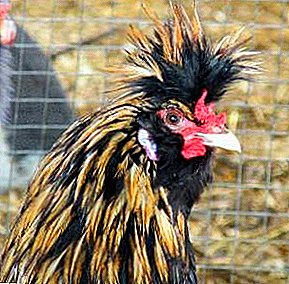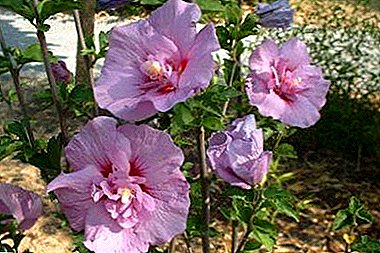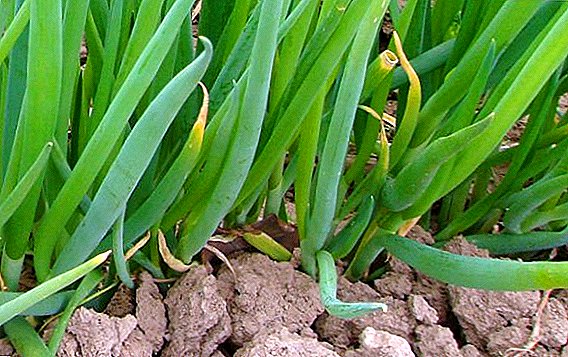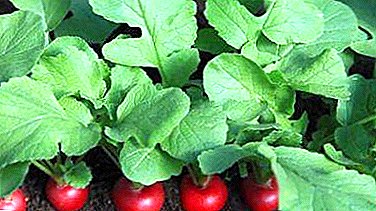
Radish belongs to unpretentious and frost-resistant plants, but if you violate some rules of cultivation, it can go to the arrow.
This negatively affects the quality of the spring harvest: the arrow takes nutrients, and the roots lose their taste and useful properties. Our article will tell why the root crop is drawn out and whether it can be prevented.
What does it mean - the radish went to the arrow?
Shooting is a process peculiar not only to radishes, but also to garlic and onions. If the purpose of growing this root is to obtain a good harvest for direct consumption, then the arrows are not needed. If the task is to collect seeds, on the contrary, flowering is desirable and necessary.
Radish is one of the representatives of the Cabbage family, whose pollination occurs due to insects or wind. When pollination occurs, the vegetable culture blooms - the inflorescences are formed on an elongated stem, known by the people as "arrow".
Gardeners try not to allow flowering, as the taste of the radish spoils, it acquires an elongated shape.
What does a radish look like?
If the radish growing conditions are not complied with (watering, soil composition, air temperature), the plants can provoke the formation of arrows and flowering. The root crop changes shape, becomes elongated, looks coarse, has a dull shade, and in some cases completely lost.
Why does this affect the quality of the crop?
 The quality of the crop of radishes suffers greatly if the crop goes to the arrow. Giving all the nutrients, the root crop loses almost all the taste and useful components.
The quality of the crop of radishes suffers greatly if the crop goes to the arrow. Giving all the nutrients, the root crop loses almost all the taste and useful components.
A flowering plant tubers become bitter or tasteless. All the power of the plant goes to the formation of inflorescences, and the roots can not gain the desired mass.
As a result, summer residents do not have a single chance to collect a good harvest, but only hard tails not intended for human consumption.
Causes of vegetable pulling
The causes of the formation of unwanted peduncles are violations of the agrotechnology of the cultivation of radishes. and mistakes made during sowing. The most common factor that causes the plant to be broken is late planting.
Planted in late May or June, the radish is experiencing a long light day. Due to excessive light, arrows and buds appear.
Radishes can go to the arrow for other reasons:
- selection of unsuitable soil (the culture prefers a light, soft, well loosened soil, and cannot form high-quality fruits in a heavy one);
- excessive application of organic fertilizers (they contribute to the active growth of not only arrows, but lush foliage);
- too close arrangement of plants (with dense planting, radish suffers from a lack of moisture, light and nutrients in the soil);
- insufficient watering (radish gives juicy and tasty fruits with moderate, regular watering);
- insufficient care (the formation of an earth crust on the surface of the soil in the absence of loosening complicates the access of oxygen to the root part, plant growth slows down).
What to do if the root crop goes to the arrow when growing
Growing radish requires certain knowledge and skills. At first glance, it may seem like a capricious culture, but this is a misconception.
 Houses. If the radish growing at home on the windowsill is stretched out, you can try to save the situation. It is necessary to completely stop the application of organic fertilizers, and add wood ash to the soil.
Houses. If the radish growing at home on the windowsill is stretched out, you can try to save the situation. It is necessary to completely stop the application of organic fertilizers, and add wood ash to the soil.It is important to keep the humidity level constant and sufficient. If sand was added to the soil during planting, it is recommended to carefully remove the top layer and replace it with fertile soil.
- In the open ground. Outside in the open ground, breaking out, they struggle to eliminate the crust that forms on the soil surface.
Vegetable does not like weathering of the soil, which is typical of many dacha plots, unlike indoor or greenhouse cultivation. In the formation of arrows recommended to thin the beds, in the future this will allow the plants to grow normally.
- In the greenhouses. It creates the most comfortable and most suitable conditions for growing radish. But even there it is not always possible to avoid stitching. For example, with a lack of lighting in a polycarbonate or other design, the roots become small, develop poorly and form arrows. Therefore it is necessary to control:
- light intensity and duration of daylight;
- temperature conditions (when the thermometer rises above 21 degrees, the radish goes into arrows);
- optimum air humidity - from 70 to 75%;
- soil moisture - in the range of 70-72%.
The soil in the greenhouse should be regularly loosened, the soil should always remain soft and loose. Technical ripeness of radish fruits ranges from 10 to 14 days, if the crop is not harvested, the plant will go to tall stems with the formation of flowers and seeds.
Preventive measures
For the prevention of scattering, it is important to follow the rules of radish care. and provide her with comfortable growing conditions. First of all, you need to select for planting those varieties that are most suited to growing in a particular climatic zone. To avoid the flowering of crops and the quality of the crop, it is necessary to:
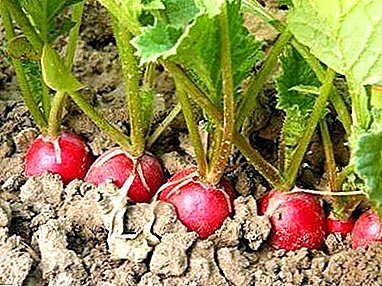 Sowing seeds as soon as the soil warms up - in early-mid-April, no later than mid-May (at this time the length of daylight is optimal for the correct formation of root crops - 13-14 hours).
Sowing seeds as soon as the soil warms up - in early-mid-April, no later than mid-May (at this time the length of daylight is optimal for the correct formation of root crops - 13-14 hours).- Sow radishes in windless, well-lit areas without shading.
- Seed up to a maximum of 2.5 cm in the ground.
- Provide regular but moderate watering.
For soil fertilization, it is better to use a complex of mineral additives instead of organic matter, to which the radish reacts with the formation of arrows. Culture prefers periodic loosening, but too often weeding usually becomes a stimulus for flowering and the formation of stems.
In order to prevent the bolting, when planting between the rows, it is necessary to leave at least 10-12 cm and 4-5 each between the plants themselves. To prevent the formation of an earthy crust, the soil surface can be mulched using humus or dry peat.
Garden radish is not a capricious and demanding garden crop, but it can react badly to non-professional care. A good harvest can be obtained both on your own window sill, and in the garden, and in the greenhouse, if you follow all the rules of agricultural engineering.


 Houses. If the radish growing at home on the windowsill is stretched out, you can try to save the situation. It is necessary to completely stop the application of organic fertilizers, and add wood ash to the soil.
Houses. If the radish growing at home on the windowsill is stretched out, you can try to save the situation. It is necessary to completely stop the application of organic fertilizers, and add wood ash to the soil. Sowing seeds as soon as the soil warms up - in early-mid-April, no later than mid-May (at this time the length of daylight is optimal for the correct formation of root crops - 13-14 hours).
Sowing seeds as soon as the soil warms up - in early-mid-April, no later than mid-May (at this time the length of daylight is optimal for the correct formation of root crops - 13-14 hours).



